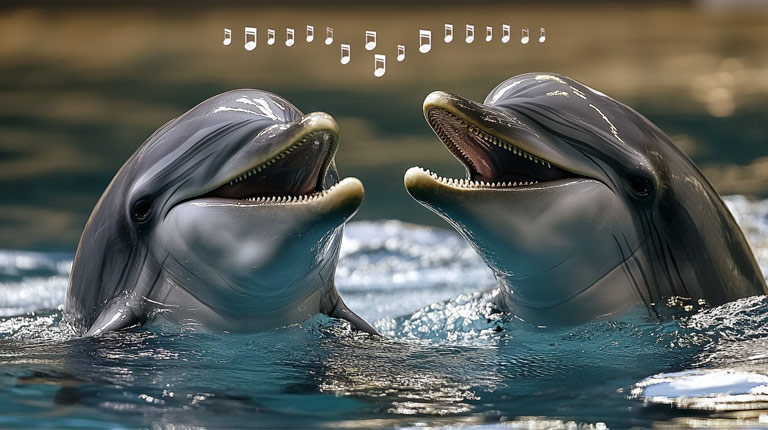Short Answer: Yes. Though dolphins lack vocal cords, they can still produce a variety of sounds, including whistles, clicks, squawks, squeaks, moans, barks, groans, and yelps, to communicate and convey emotions.
Dolphins are known for their complex vocalizations, often referred to as “singing.” While they don’t produce songs in the same way that birds do, dolphins use a diverse range of clicks, whistles, and other vocal sounds to communicate with each other and navigate their underwater environment.
The Melodic World of Dolphins
Dolphins are among the most intelligent and fascinating creatures of the ocean, known for their complex behaviors and vocalizations. But do dolphins actually sing? While dolphins may not sing in the traditional sense, their repertoire of sounds is diverse and plays a crucial role in communication, social interaction, and navigation.
Dolphins are the maestros of the marine world, creating a symphony of sounds that serve various purposes. Though they don’t sing like birds, dolphins produce a range of vocalizations, including clicks, whistles, and burst-pulse sounds. Each sound has its unique function, from echolocation to identify objects and prey to social communication within their pods.

Whistles are often the most melodic and are used for social bonding and identifying individuals. These whistles can be so distinct that scientists refer to them as “signature whistles,” unique to each dolphin, akin to a human name. Clicks, on the other hand, are primarily used for echolocation, allowing dolphins to navigate and hunt in the dark or murky waters. Burst-pulse sounds are usually employed in situations of excitement, aggression, or social dominance, making them a critical part of dolphin communication.
Dolphins are not just passive listeners in this underwater concert; they are also highly responsive to sounds. Research indicates that dolphins can hear frequencies far beyond the human range, and they can even recognize human voices and respond to them in controlled environments. This sophisticated auditory system allows them to be attuned to their surroundings and engage in complex social interactions with their pod members and, occasionally, with humans.
Types of Dolphin Sounds and Their Purposes
- Whistles: Used for social interaction, identification, and bonding within dolphin pods. These sounds can be melodic and vary in pitch, duration, and repetition.
- Clicks: Primarily used for echolocation, helping dolphins locate prey and navigate through their environment.
- Burst-pulse Sounds: Often associated with social dominance, aggression, or excitement, these sounds are rapid and intense, conveying urgency or emotion.
Q&A Section
Can dolphins hear humans? Yes, dolphins can hear humans, especially in controlled environments where they are trained to recognize specific commands or sounds. Dolphins have a wide range of hearing, which extends beyond human capabilities, allowing them to detect both low and high-frequency sounds underwater.
What sounds do dolphins make when they are happy? When dolphins are happy or excited, they often produce burst-pulse sounds or rapid, high-pitched whistles. These sounds can indicate playfulness, social bonding, or contentment within their pod.
What kind of sound do dolphins make? Dolphins make a variety of sounds, including clicks used for echolocation, melodic whistles for social communication, and burst-pulse sounds that convey emotion or urgency. Each sound serves a specific purpose in the dolphin’s daily life, helping them navigate, hunt, and interact with their pod members.












